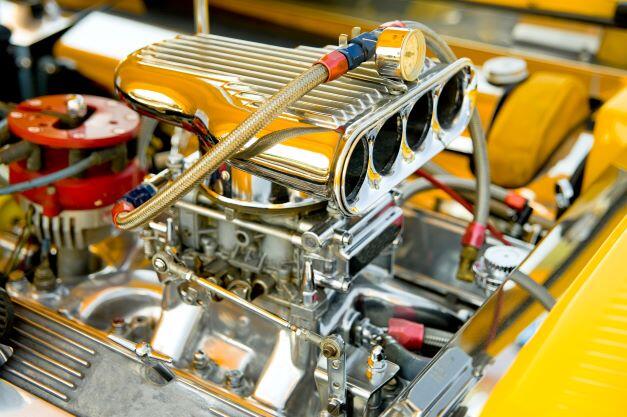Turbocharger VS Supercharger

Turbocharger VS Supercharger
Regarding enhancing engine performance, turbocharging and supercharging are the two primary ways. Both forced induction methods share the common purpose of boosting horsepower in normally aspirated engines. Although the two technologies are sometimes mistaken for one another or used interchangeably, distinct differences set them apart.
Turbochargers and superchargers:
Before discussing their differences, it helps to understand what links turbochargers and superchargers from an engineering standpoint. Turbochargers and superchargers are forced induction systems. These systems use compressors to push compressed air into the engine. The compressed air allows for extra oxygen to reach the engine, which helps create an extra boost of power.
The main difference between turbochargers and superchargers is their energy source. Turbochargers use the vehicle's exhaust gas; two fans – a turbine fan and a compressor fan – rotate from the exhaust gas. Conversely, superchargers are powered directly by the engine; a belt pulley drives gears that cause a compressor fan to rotate.
What is Turbocharging?
As exhaust gasses pass through and spin a turbine, the turbine creates a vacuum that compresses air before forcing it into an engine's intake manifold. As the engine spins faster, so does the turbine, sending even more air into the motor and boosting power by 25% to 40%.
However, this system is not instantaneous. Since an exhaust-driven turbine takes time to spool up and the turbine must spin at a specific rate of speed for optimal boost, the system will often experience a lag. This delay, known as a "turbo lag," is a momentary power lapse as the turbocharger tries to get up to speed.
Turbochargers are not as powerful as superchargers, but since they run off recovered energy from exhaust gasses, they improve the engine's overall efficiency. A turbocharger also utilizes a wastegate that reduces the emission of exhaust gasses into the environment.
What is Supercharging?
A supercharger is connected to the engine by a belt or chain. As the engine's crankshaft spins, the supercharger spins along with it. Like with the turbocharger, the spinning creates a vacuum that compresses air and forces it directly into the engine.
The direct-drive relationship between the supercharger and the engine creates a linear powerband that results in an instantaneous boost of 30% to 50%. The supercharger provides this optimum boost throughout the rev band without any lag.
This direct connection to the engine makes superchargers more powerful than turbochargers, but this also makes superchargers considerably less efficient. In the end, they are designed to produce engine power by drawing engine power. In some ways, they are like powering an air pump with another air pump.
Also, unlike a turbocharger, a supercharger does not utilize a wastegate. This means it emits more smog than its turbocharged counterpart.
Which Is Better: Turbo- Or Supercharger?
Each can be used to increase power, fuel economy, or both, and each has pros and cons. Turbochargers capitalize on some "free" energy that would otherwise be completely lost in the exhaust. Driving the turbine does increase exhaust backpressure, which exerts some load on the engine, but the net loss tends to be less by comparison with the direct mechanical load that is driving a supercharger involves (the biggest blowers powering a top-fuel dragster consume 900 crankshaft horsepower in an engine rated at 7,500 total horsepower). But superchargers can provide their boost almost instantly, whereas turbochargers typically suffer some response lag while the exhaust pressure required to spin the turbine builds. A top-fuel dragster trying to run the quarter in four seconds has no time to waste waiting for exhaust pressure to build, so they all use superchargers.
Although the saying goes, "there is no replacement for displacement," turbochargers and superchargers are highly effective ways to get more power and performance from any engine. But each system comes with a unique set of trade-offs. Turbocharging is the better choice for those looking to balance performance with fuel economy and efficiency. For those more interested in a straightforward solution to raw horsepower, supercharging is likely the way to go.
